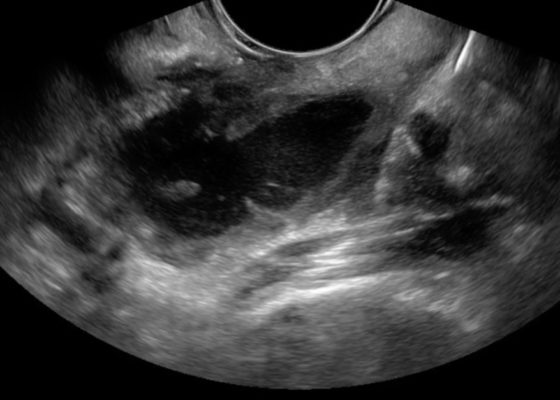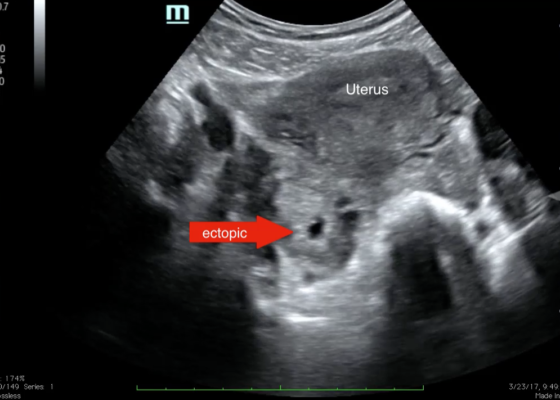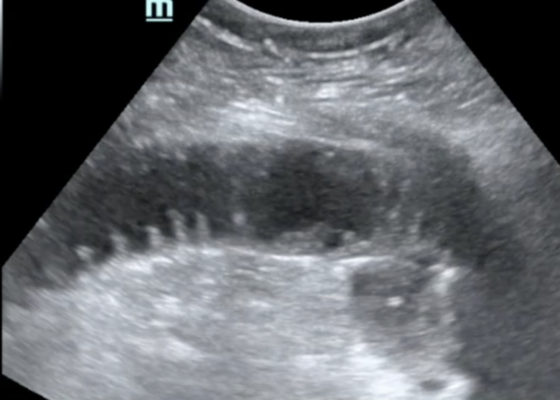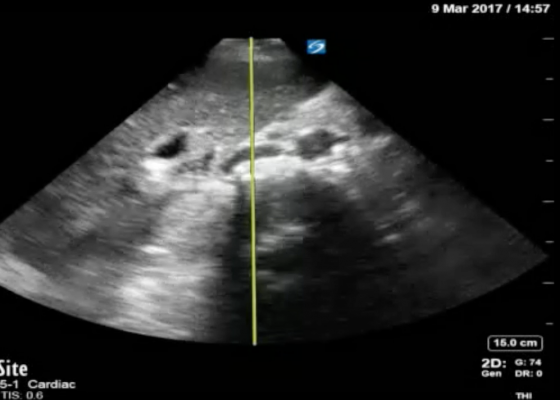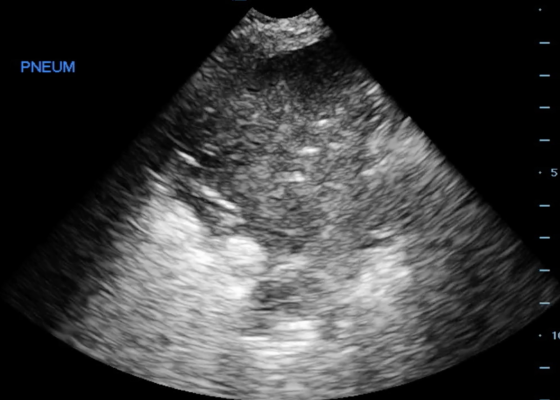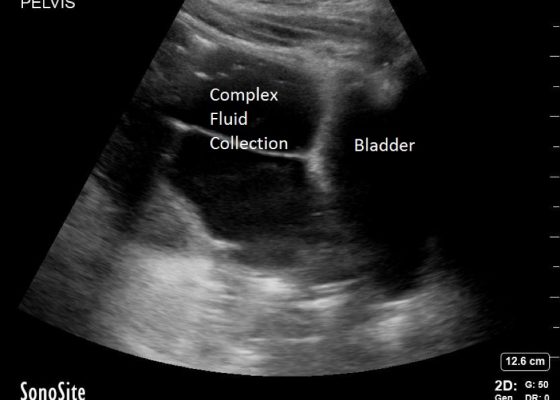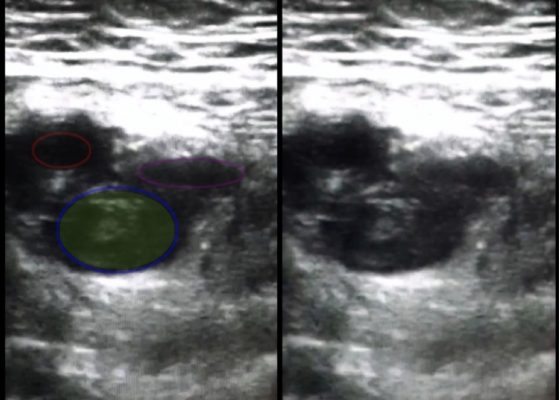Ultrasound
Point-of-care Ultrasound Detection of Endophthalmitis
DOI: https://doi.org/10.21980/J8G634The patient’s ultrasound revealed an attached retina and a complex network of hyperechoic, mobile, membranous material in the posterior segment.
Bedside Ultrasound for the Diagnosis of Peritonsillar Abscess
DOI: https://doi.org/10.21980/J8N33NThe first video is an intraoral ultrasound using the high frequency endocavitary probe demonstrating an anechoic fluid collection adjacent to the patient’s enlarged left tonsil. The second video shows real-time ultrasound-guided successful drainage of the PTA.
An Elderly Male with Amyand’s Hernia
DOI: https://doi.org/10.21980/J80D13Ultrasound of the right scrotum shows a right inguinal hernia with an air-containing loop of bowel (white arrow) and a non-compressible appendix (yellow arrow). Coronal and axial views of abdomen-pelvis CT show a right inguinal hernia containing a loop of small bowel (white arrow) and appendix (yellow arrow).
Point-of-care Ultrasound for the Diagnosis of Ectopic Pregnancy
DOI: https://doi.org/10.21980/J8VK7VThe transabdominal pelvic ultrasound shows an empty uterus (annotated) with free fluid and a right sided extrauterine gestational sac representing an ectopic pregnancy (red arrow).
Bedside Ultrasound for the Diagnosis of Small Bowel Obstruction
DOI: https://doi.org/10.21980/J86W6PThe POCUS utilizing the low frequency curvilinear probe demonstrates fluid-filled, dilated bowel loops greater than 2.5cm with to-and-fro peristalsis, and thickened bowel walls greater than 3mm, concerning for SBO.
Using Bedside Ultrasound to Rapidly Differentiate Shock
DOI: https://doi.org/10.21980/J8S047A RUSH exam demonstrated hyperdynamic cardiac contractility and collapse of the inferior vena cava (IVC) with probe compression more than 50% suggesting hypovolemia likely secondary to sepsis. Incidentally, Morrison’s pouch revealed a large right renal cyst but no signs of free fluid. A computed tomography of abdomen/pelvis showed a 10.8 x 9.5 cm right renal cyst and left lower lobe pneumonia.
Pneumonia Diagnosed by Point-of-Care Ultrasound
DOI: https://doi.org/10.21980/J8XP64Point-of-care ultrasound of the left lower lobe demonstrates lung hepatization, a classic finding for pneumonia. In addition, a shred sign is present with both air bronchograms and focal B-lines—all suggestive of poorly aerated, consolidated lung. The patient was started on antibiotics and admitted to the hospital with a diagnosis of community-acquired pneumonia.
Perforated Gastric Ulcer with Intra-abdominal Abscess
DOI: https://doi.org/10.21980/J82H0CBedside ultrasound revealed a large volume of free fluid in the right upper quadrant and in the pelvis. The fluid appeared complex with multiple septations. Its appearance was not consistent with ascites or acute intra-abdominal free fluid due to striations and pockets.
Use of Bedside Compression Ultrasonography for Diagnosis of Deep Venous Thrombosis
DOI: https://doi.org/10.21980/J81G94As shown in the still image of the performed ultrasound, a transverse view of the proximal-thigh revealed a visible thrombus (green shading) occluding the lumen of the left common femoral vein (blue ring), which was non-compressible when direct pressure was applied to the probe. Also visible is a patent and compressible branch of the common femoral vein (purple ring) and the femoral artery (red ring), highlighted by its thick vessel wall and pulsatile motion.
Bedside Echocardiography for Rapid Diagnosis of Malignant Cardiac Tamponade
DOI: https://doi.org/10.21980/J82S38The video shows a subxiphoid view of the heart with evidence of a large pericardial effusion with tamponade – note the anechoic stripe in the pericardial sac (see red arrow). This video demonstrates paradoxical right ventricular collapse during diastole and right atrial collapse during systole which is indicative of tamponade.1,2
Figure 1 is from the same patient and shows sonographic pulsus paradoxus. This is an apical 4 chamber view of the heart with the sampling gate of the pulsed wave doppler placed over the mitral valve. The Vpeak max and Vpeak min are indicated. If there is more than a 25% difference with inspiration between these 2 values, this is highly suggestive of tamponade.1 In this case, there is a 32.4% difference between the Vpeak max 69.55 cm/s and Vpeak min 46.99 cm/s.


